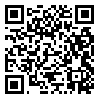Volume 11, Issue 4 (12-2017)
payavard 2017, 11(4): 391-399 |
Back to browse issues page
Download citation:
BibTeX | RIS | EndNote | Medlars | ProCite | Reference Manager | RefWorks
Send citation to:



BibTeX | RIS | EndNote | Medlars | ProCite | Reference Manager | RefWorks
Send citation to:
Shakerian A, Rahimi E, Mesbah J, Mousavi M. Molecular Detection of Clostridium Perfringens in Some Raw Animal Food Origin Products in Shahrekord, 2014. payavard 2017; 11 (4) :391-399
URL: http://payavard.tums.ac.ir/article-1-6321-en.html
URL: http://payavard.tums.ac.ir/article-1-6321-en.html
1- Professor, Food Hygiene Department, School of Veterinary Medicine, Shahrekord Branch, Islamic Azad University, Shahrekord, Iran , amshakerian@iaushk.ac.ir
2- Professor, Food Hygiene Department, School of Veterinary Medicine, Shahrekord Branch, Islamic Azad University, Shahrekord, Iran
3- Ph.D. in Veterinary Medicine, School of Veterinary Medicine, Shahrekord Branch, Islamic Azad University, Shahrekord, Iran
2- Professor, Food Hygiene Department, School of Veterinary Medicine, Shahrekord Branch, Islamic Azad University, Shahrekord, Iran
3- Ph.D. in Veterinary Medicine, School of Veterinary Medicine, Shahrekord Branch, Islamic Azad University, Shahrekord, Iran
Abstract: (3946 Views)
Background and Aim: Clostridium perfringens is one of the major agents of food poisoning in humans around the world. This study was accomplished to identify and track the toxins of Clostridium perfringens bacterium in some raw animal food origin products in Shahrekord.
Materials and Methods: In this study, 100 samples of traditional and commercial curd and 43 samples of beef and lamb meats were randomly collected from Shahrekord’s shopping center in 2014. Then to identify the bacteria in samples cultivation and polymerase chain reaction (PCR) method were used.
Results: In culture method no positive samples were isolated. However, frequency of Clostridium perfringens bacterium in traditional and commercial curd samples and beef and lambs samples have been reported as 6, 10, 25 and 13 percent using PCR method, respectively. Frequency of cpa, cpb, cpe, cpi and etx genes were detected in curd samples were 37.5, 25, 75, 12.5 and 12.5 percent respectively and in meat samples 62, 50, 75.5, 37.5 and 25 percent respectively. Statistically significant differences were observed between the prevalence of the bacterium in various samples and their isolated toxins (p < 0.05).
Conclusion: With attention to infection of above food samples to Clostridium perfringens and also its transfer by foodstuffs to human, it is necessary to reduce food pollution of this organism for of public health.
Materials and Methods: In this study, 100 samples of traditional and commercial curd and 43 samples of beef and lamb meats were randomly collected from Shahrekord’s shopping center in 2014. Then to identify the bacteria in samples cultivation and polymerase chain reaction (PCR) method were used.
Results: In culture method no positive samples were isolated. However, frequency of Clostridium perfringens bacterium in traditional and commercial curd samples and beef and lambs samples have been reported as 6, 10, 25 and 13 percent using PCR method, respectively. Frequency of cpa, cpb, cpe, cpi and etx genes were detected in curd samples were 37.5, 25, 75, 12.5 and 12.5 percent respectively and in meat samples 62, 50, 75.5, 37.5 and 25 percent respectively. Statistically significant differences were observed between the prevalence of the bacterium in various samples and their isolated toxins (p < 0.05).
Conclusion: With attention to infection of above food samples to Clostridium perfringens and also its transfer by foodstuffs to human, it is necessary to reduce food pollution of this organism for of public health.
Send email to the article author
| Rights and permissions | |
 |
This work is licensed under a Creative Commons Attribution-NonCommercial 4.0 International License. |





